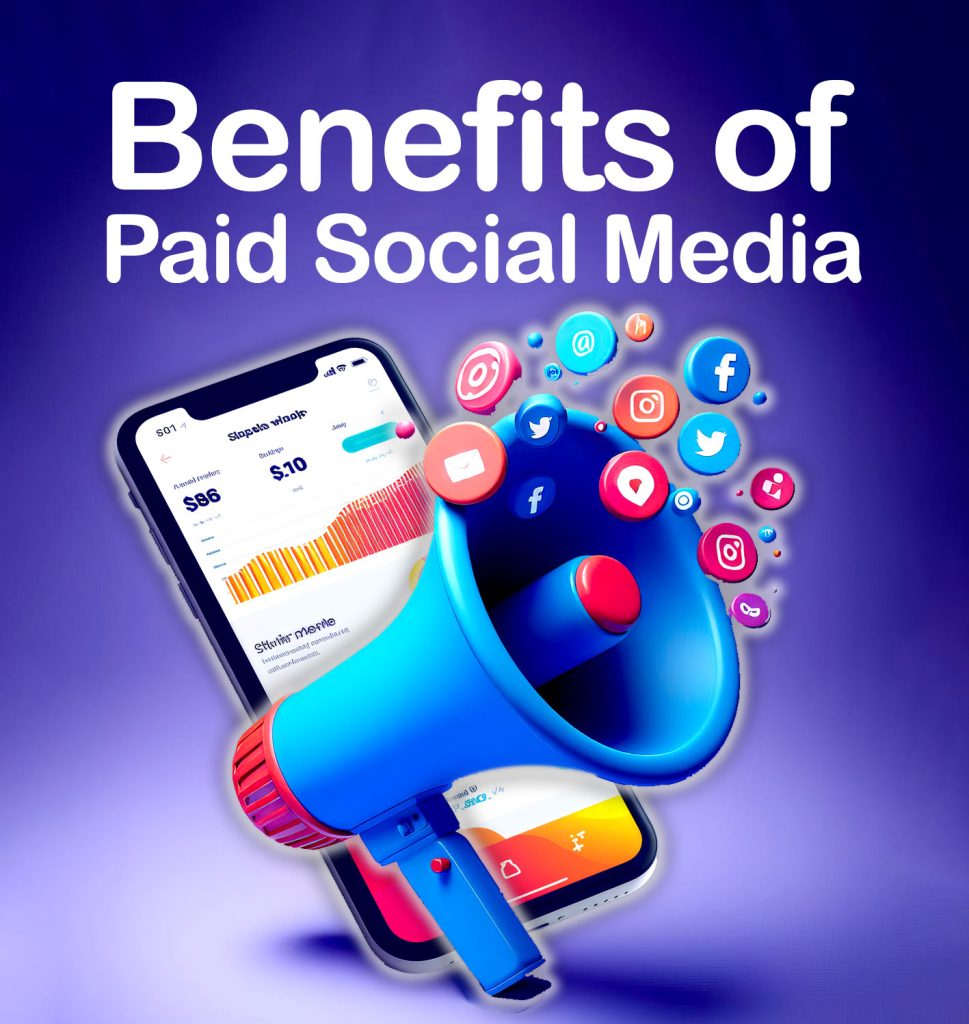5 Benefits Of Paid Media

In the realm of digital marketing, businesses are constantly seeking effective strategies to reach and engage their target audience. Among the myriad options available, paid media has emerged as a powerful tool for companies to amplify their brand voice, drive website traffic, and generate leads. Paid media, which encompasses channels like search engines, social media platforms, and display advertising, offers a multifaceted approach to advertising, allowing businesses to tailor their campaigns to specific goals and demographics. Here, we explore the five benefits of paid media that make it an indispensable component of a comprehensive marketing strategy.
1. Immediate Reach and Visibility
One of the most significant advantages of paid media is its ability to provide immediate reach and visibility for businesses. Unlike organic SEO strategies, which can take months to yield significant results, paid media campaigns can start driving traffic to a website almost instantly. This is particularly beneficial for new businesses or those looking to quickly capitalize on trending topics or seasonal demand. Platforms like Google Ads and Facebook Ads offer sophisticated targeting options, ensuring that your advertisements are seen by the people most likely to be interested in your products or services.
2. Measurable and Trackable
Paid media campaigns are inherently measurable and trackable, offering businesses a level of transparency and accountability that is difficult to achieve with traditional advertising methods. Through the use of analytics tools, companies can monitor the performance of their ads in real-time, assessing metrics such as click-through rates (CTR), conversion rates, and return on ad spend (ROAS). This data not only helps in evaluating the success of a campaign but also informs future marketing strategies, allowing for continuous optimization and improvement.
3. Flexibility and Scalability
The flexibility and scalability of paid media make it an attractive option for businesses of all sizes. Whether you’re a small startup with a limited budget or a large corporation with extensive resources, paid media channels can be tailored to meet your specific needs and objectives. Campaigns can be easily scaled up or down based on performance and budget, and the targeting options available ensure that your message reaches the right audience at the right time. This adaptability is crucial in today’s fast-paced digital landscape, where market conditions and consumer behaviors can shift rapidly.
4. Targeting and Personalization
Paid media offers unparalleled targeting and personalization capabilities, enabling businesses to craft highly specific messages that resonate with their target audience. Beyond demographic targeting, platforms now offer advanced options such as interest-based targeting, lookalike audiences, and even custom audiences based on customer data. This level of personalization not only improves the relevance of advertisements but also enhances the user experience, as consumers are more likely to engage with content that aligns with their interests and needs.
5. Competitive Advantage
In highly competitive markets, embracing paid media can be a decisive factor in gaining a competitive advantage. By leveraging paid channels, businesses can outmaneuver their competitors, especially in scenarios where organic visibility is challenging to achieve. Paid media allows for proactive marketing, where companies can anticipate and respond to consumer needs, trends, and competitor activities in real-time. Moreover, the ability to immediately adjust and refine campaigns based on performance data ensures that businesses remain agile and responsive to changing market dynamics.
<div class="faq-container">
<div class="faq-item">
<div class="faq-question">
<h3>How do I measure the success of my paid media campaign?</h3>
<span class="faq-toggle">+</span>
</div>
<div class="faq-answer">
<p>To measure the success of your paid media campaign, focus on key performance indicators (KPIs) such as click-through rate (CTR), conversion rate, cost per click (CPC), and return on ad spend (ROAS). Utilize analytics tools provided by the advertising platform, and consider integrating third-party analytics software for more comprehensive insights.</p>
</div>
</div>
<div class="faq-item">
<div class="faq-question">
<h3>What are the most effective paid media channels for my business?</h3>
<span class="faq-toggle">+</span>
</div>
<div class="faq-answer">
<p>The most effective paid media channels for your business depend on your target audience, marketing objectives, and the nature of your products or services. Google Ads are often ideal for businesses seeking to capture search intent, while Facebook Ads and other social media platforms are suited for targeting based on interests, behaviors, and demographics.</p>
</div>
</div>
<div class="faq-item">
<div class="faq-question">
<h3>How can I optimize my paid media campaigns for better performance?</h3>
<span class="faq-toggle">+</span>
</div>
<div class="faq-answer">
<p>Optimizing your paid media campaigns involves continuous monitoring of performance data, A/B testing of ad creatives and targeting options, and adjusting bids and budgets based on ROI analysis. It's also crucial to ensure that your landing pages are optimized for conversions and provide a seamless user experience.</p>
</div>
</div>
</div>
In conclusion, the benefits of paid media for businesses are multifaceted and significant. By offering immediate reach, measurable performance, flexibility, advanced targeting capabilities, and a means to gain a competitive edge, paid media has become an indispensable tool in the digital marketing arsenal. As the digital landscape continues to evolve, leveraging paid media effectively will remain crucial for businesses aiming to thrive in a competitive, ever-changing market. Whether you’re seeking to boost brand awareness, drive website traffic, or generate leads, a well-crafted paid media strategy can be the key to unlocking your marketing goals.
